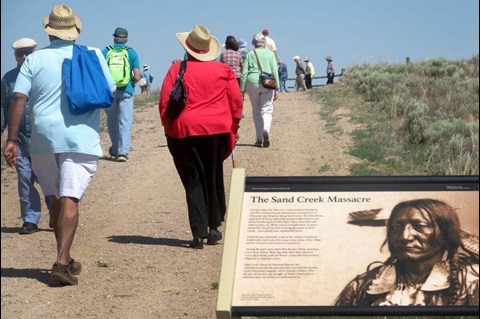Sand Creek Massacre
On November 29, 1864, Methodists led a massacre on peacefully gathered Cheyenne and Arapaho, murdering over two hundred Indigenous women, children, and peace chiefs. Pieces of their bodies were then marched 173 miles to Denver to display in victory. It is time we name this harm, hold ourselves accountable, and begin the long journey of repentance.
The General Agencies of The United Methodist Church are calling upon annual conferences, districts, and local churches to join in solidarity with the descendants of Sand Creek as we do the work to educate ourselves along a path of healing.
The work of healing is work we cannot and should not do alone. It requires intention, accountability, and most of all, community. Join us. Learn with us. Heal with us.












